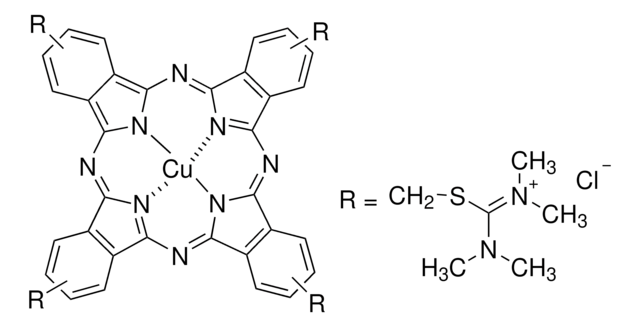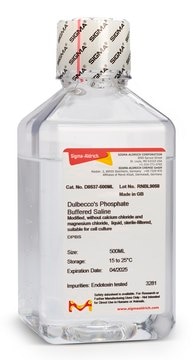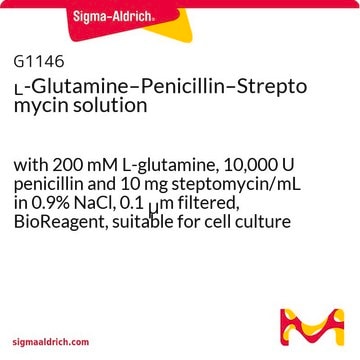A6964
Accutase® solution
sterile-filtered, suitable for cell culture
Synonym(s):
Cell detachment solution
Select a Size
Select a Size
About This Item
Recommended Products
sterility
sterile-filtered
Quality Level
form
liquid
concentration
400-600 units/mL
technique(s)
cell culture | mammalian: suitable
single cell analysis: suitable
impurities
≤1 EU/mL endotoxin
pH
6.8-7.8
shipped in
dry ice
Storage temp.
−20°C
General description
Application
Suitable for use in preparation of single cell suspension for sequencing.
Features and Benefits
Formula variant
Preparation Note
Legal Information
related product
Storage Class
12 - Non Combustible Liquids
wgk_germany
WGK 1
flash_point_f
Not applicable
flash_point_c
Not applicable
Choose from one of the most recent versions:
Certificates of Analysis (COA)
Don't see the Right Version?
If you require a particular version, you can look up a specific certificate by the Lot or Batch number.
Already Own This Product?
Find documentation for the products that you have recently purchased in the Document Library.
Customers Also Viewed
Articles
Frequently asked questions about neural stem cells including NSC derivation, expansion and differentiation.
Use of MULTI-seq lipid-modified oligos, protocol, and troubleshooting guide for PCR Assays and Sequencing applications.
PLTMax® Human Platelet Lysate (hPL) is a superior serum-free and xeno-free media supplement alternative to fetal bovine serum (FBS) for human mesenchymal stem cell (MSC) cultures.
Derivation and characterization of functional human neural stem cell derived oligodendrocyte progenitor cells (OPCs) that efficiently myelinate primary neurons in culture.
Protocols
Mesenchymal Stem Cells and Media enable in vitro expansion and differentiation, vital for various tissue sources.
Step-by-step stem cell culture protocols for human induced pluripotent stem cells (iPSCs) including ips cell thawing, expanding, freezing and characterizing.
A stem cell culture protocol to generate 3D NSC models of Alzheimer’s disease using ReNcell human neural stem cell lines.
Step-by-step culture protocols for neural stem cell culture including NSC isolation, expansion, differentiation and characterization.
Related Content
Defined culture conditions. Consistent growth of human cancer cell lines in PromoCell’s serum-free/xeno-free Cancer Cell Line Media-XF. Explore over 350 PromoCell products on Sigma.com
Our team of scientists has experience in all areas of research including Life Science, Material Science, Chemical Synthesis, Chromatography, Analytical and many others.
Contact Technical Service















